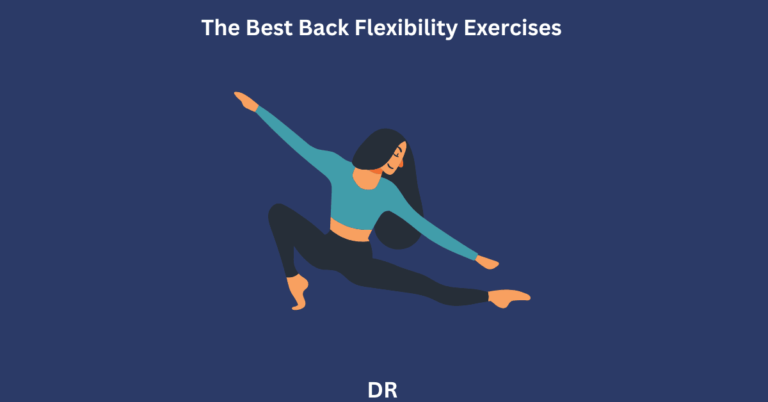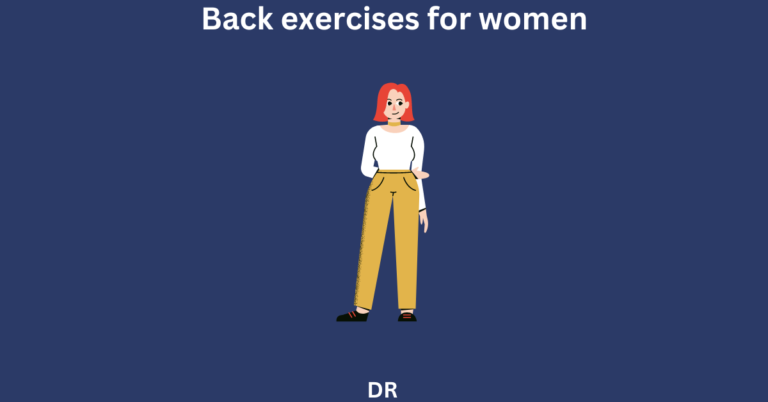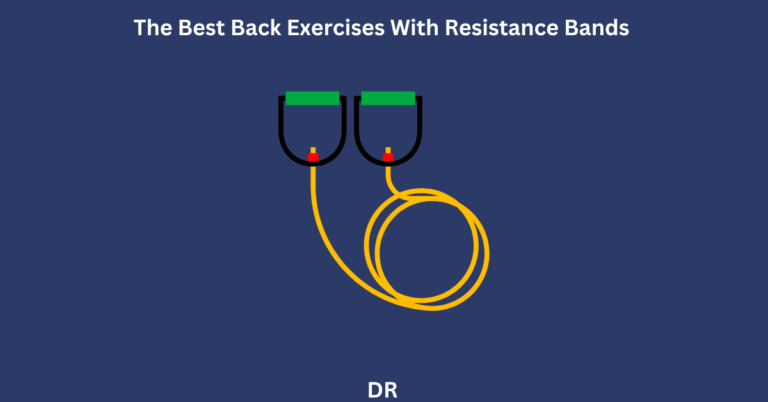How To Do The Seated Cable Row, the best guide in 2024
Back Workouts 101
Why Bother with Back Training?
When I first dipped my toes into the world of fitness, a strong back wasn’t even on my radar. But boy, did I soon discover that’s a mistake! A beefy back isn’t just for show-offs and gym rats; it’s essential for everyone, from gym newbies to seasoned lifters. A well-rounded back workout offers loads of perks, from fixing that notorious slouch to boosting your overall power.
An ironclad back is like your body’s loyal assistant, supporting you in countless day-to-day activities. Trust me, when you hit those back muscles like the lats, rhomboids, and trapezius, you’re doing wonders for your shoulder’s well-being, side-stepping injuries, and even putting more oomph in your other lifts.
| Muscle Group | Common Exercises |
|---|---|
| Lats (Latissimus Dorsi) | Pull-ups, Seated Cable Row |
| Rhomboids | Face Pulls, Pinch Grips |
| Trapezius | Shrugs, Dumbbell Row |
Do you feel like a hunchback from sitting all day? Pumping up your back muscles can ease those backaches. The seated cable row, for instance, is top-notch for sculpting a mighty back and teaching even rookies the right way to move those shoulder blades. It hits the big back muscles and gives your biceps and grip a workout they won’t forget.
| Perk | What’s in it for You? |
|---|---|
| Stand Tall | Builds muscles that keep that spine standing proud. |
| Happy Shoulders | Keeps you from crying over pulled muscles. |
| Power Up | Lends a hand with other big-boy lifts. |
Before I jump into back exercises, I always check my gear and bone up on the techniques. This bit of homework helps dodge rookie mistakes and crank up those gains!
Curious about other ways to beef up your back? You’re in luck! We’ve got handy guides on upper back exercises, dumbbell back exercises, and for those tender years, back strengthening exercises for seniors.
Making back workouts a priority has not only made me stronger but also rocked my overall fitness world. So, if you’re looking to step up your game and improve your health, let back training take a front-row seat in your workout routine.
Understanding Seated Cable Rows
Benefits of Seated Cable Rows
Seated cable rows? They’re my go-to in the gym, and for good reason! This move hits a bunch of back muscles, from the rhomboids to the lats. It’s not just about flexing those muscles in front of the mirror; it’s about boosting upper body strength and giving your posture a much-needed makeover (Healthline).
- Stand Tall: Doing seated cable rows on the regular straightens up that spine, fighting off the dreaded hunch from hunchback chairs and screens.
- Boosted Back & Upper Arms: Each pull engages the main back crew, safeguarding your shoulders from sneaky injuries and beefing up your back.
- Rock-Solid Stability: As it homes in on the lats and rhomboids, the seated row helps anchor your shoulders, vital for those times when you’re reaching for the stars or just the top shelf.
If a stronger, more sculpted back is what you’re after, sling this exercise into your lineup. For more on getting that upper back sorted, check out upper back exercises for some fresh ideas.
Muscles Targeted by Seated Cable Rows
Every time I pull on that cable, I can feel muscles all over my back and arms getting in on the action. Here’s a cheat sheet of the muscle groups that get busy during this workout:
| Muscle Group | Role |
|---|---|
| Latissimus Dorsi | Main worker |
| Rhomboids | Main worker |
| Trapezius | Helper |
| Biceps | Helper |
| Forearm Muscles | Support crew |
| Lower Back Extensors | Support crew (for advanced folks) |
These muscle groups team up to tackle that rowing action, making it a star in the compound-exercise lineup for a stronger upper body. It really zones in on the latissimus dorsi and rhomboids, sculpting a wider back—definitely very cool!
Up top, the trapezius does its thing along the neck, shoulders, and upper back, while the biceps and even the trusty triceps tag along as stabilizers (Verywell Fit). This mix of muscles not only packs more punch to your workout but also ensures your upper body is balanced and ready for action.
Looking to shake things up a bit? Diving into other back exercises with barbell or checking out kettlebell back exercises can add spice to your routine and keep things fresh.
By getting the lowdown on the benefits and the muscled groups you’re targeting, you can crank up the effect of those seated cable rows and work towards a solid upper-body goal with a grin.
Perfecting Your Form
Common Mistakes to Avoid
Ah, the seated cable row—get it right, and you’ve got a powerhouse move for building that back! But, dive in too fast, and you might just come out worse for wear. Here’s some stuff I’ve seen folks mess up, so let’s get you on track and injury-free:
- Going Heavy Too Soon: We all wanna impress the gym crowd. But jumping to heavier weights too quickly? That’s how you end up sacrificing form, and believe me, it ain’t worth it (Men’s Health). Nail the form first, then add those extra plates.
- Curved Back Woes: Keep that back straight. Slouching during the row can do more harm than good and make the exercise a waste of time (Verywell Fit).
- Relying on Momentum: If your torso’s swinging more than a pendulum in a clock shop, you’re focusing on the wrong part. The magic should happen with your arms and back.
- Speedy Returns: Letting that weight zip back is like throwing away gains. Easy does it, folks!
- Leaning Back Too Much: Kinda like lounging in a recliner when you’re supposed to be working. The aim is your mid-back, not the lower bit (Men’s Health).
Proper Technique for Maximum Gains
Now, let’s get cracking on doing it the pro way. Here’s how to ace the seated cable row and get the most out of it:
- Set Up:
- Plop yourself on the bench, make sure your feet are nice and snug on those footplates.
- Grab the handle with a nice, firm overhand grip.
- Starting Position:
- Engage that core—think about how it feels when you laugh really hard (Verywell Fit).
- Let your arms stretch out all the way, but don’t lock ’em stiff. Elbows need a gentle bend.
- Lean a smidge forward from the hips, keep the back in check.
- Execution:
- Pull the handle towards you with a straight back.
- Use your elbows to pull back, not your whole torso.
- At the end of each pull, give your shoulder blades a good squeeze (Verywell Fit).
- Return Phase:
- Ease back to the start with arms stretching out.
- Stay in control and avoid a loud weight crash (Healthline).
- Breathing:
- Breathe out as you pull the handle.
- Inhale as you return to the starting position.
| Step | Action | Tips |
|---|---|---|
| Set Up | Sit on bench, feet secure | No foot dancing |
| Starting Position | Engage core, back straight | Slight hip-driven lean |
| Execution | Pull handle to torso | Elbows drive the action |
| Return | Slowly extend arms | Control over chaos |
| Breathing | Exhale pull, inhale return | Deep breathing, please |
Want more on beefing up your back game? Check out our collection of compound back exercisesor tailor things with some back exercises for men.
Get these tips down pat, and you’re looking at a safer, more effective workout. And if you’re hankering for some variations or need more ideas, our page on cable back exercises has got plenty for you. Time to row like a pro!
Incorporating Seated Cable Rows
Ah, the seated cable row—a nifty exercise for anyone looking to sculpt that upper back! It’s not just about looking good; you’re building some serious strength here, folks. Do it right and your back muscles will thank you for years to come.
Seated Cable Row Routine
To really squeeze the juice out of your seated cable rows—let’s get you solid on this routine. You can mix and match it depending on whether you’re just figuring out which end of the cable to pull or if you’re practically a bodybuilding sage.
For the Newbies: Just getting your feet wet? Perfect form trumps heavy weights every. single. time.
- Warm-Up: Get the blood flowing with 5-10 minutes of light cardio—a quick walk or a lazy spin on the bike should do it.
- Seated Cable Rows:
- Go for 3 sets of 10-12 reps.
- Choose a weight that doesn’t have you straining like a contestant on a game show, focus on keeping that form clean.
- Take a chill pill for 60-90 seconds between sets.
For the Intermediate Folks: Look at you, getting all comfy with those cables! Time to step it up.
- Warm-Up: Another 5-10 minutes of light cardio, you know the drill.
- Seated Cable Rows:
- Knock out 4 sets of 8-10 reps.
- Crank the weight up a smidge to make those muscles sweat.
- Try adding a one arm cable row to the mix to challenge one side at a time.
- Rest up for 60 seconds between sets.
For the Pros: Ready to play in the big leagues? Let’s boost that volume and mix in some goodies.
- Warm-Up: Good ol’ 5-10 minute cardio to loosen up.
- Seated Cable Rows:
- Aim for 4-5 sets of 6-8 reps.
- Go heavy or go home, they’ll be crying but happy tears.
- Spice things up with a super-set of inverted rows to really get that heart pumping.
- Quick breathers, 45-60 seconds between sets.
Reps and Sets Guide
If you aim to maximise size, power, or just outlast the Duracell bunny, adjust your sets and reps. Check out this cheat sheet:
| Your Goal | Sets | Reps | Rest | Pro Tips |
|---|---|---|---|---|
| Bulk Up | 3-4 | 8-12 | 60-90 sec | Keep the weight manageable, keep the form tight. |
| Get Strong | 4-5 | 4-6 | 2-3 min | Hefty weights, dynamic moves. |
| Go the Distance | 2-3 | 15-20 | 30-60 sec | Lighter weights, steady as she goes. |
Stick with these pointers, and you’re on your way to back gains worth bragging about. The real magic is in nailing your form and upping the weight (Verywell Fit).
Looking for some variety in your life? Switch things up with dumbbell back exercises or explore cable back exercises. And hey, keeping things safe is paramount—our guide to safe gym equipment for your lower back might just be what you need.
Mix these tips into your workout plans, and you’ll not only boost your seated cable row game but also build up a solid, resilient back. Here’s to lifting better, smarter, and stronger!
Seated Cable Row Variations
When I first poked my nose into seated cable rows, I didn’t realise I’d stumbled upon a treasure trove of variations. Turns out, mixing things up can work different muscles and spice up my back routines. Here’s my rundown of the ones I reckon are top-notch.
Wide-Grip vs. Close-Grip Rows
Wide-Grip Rows
With a wide grip, I felt the smaller muscles in my back and arms putting in some serious effort. Instead of letting the lats hog all the glory, the straight-bar attachment gives centre stage to those underappreciated muscles: the middle and lower traps, the backside deltoids, and the brachialis. I swear those muscles were throwing a party I didn’t know about!
| Muscle Group | Wide-Grip Muscle Stars |
|---|---|
| Main Heroes | Middle Trapezius, Lower Trapezius |
| Backup Singers | Rear Deltoids, Brachialis |
Close-Grip Rows
Switching to a close grip dials up the intensity on the lats and rhomboids, while the traps and biceps pop by to complete the ensemble. Using a V-bar for this one feels like my wrists are finally on vacation — comfy and relaxed. I’m all about this move when the mission is all about the big guns in my back arsenal.
| Muscle Group | Close-Grip Muscle Stars |
|---|---|
| Main Heroes | Latissimus Dorsi, Rhomboids |
| Backup Singers | Trapezius, Biceps |
Rope Attachment vs. V-Bar Attachment
Rope Attachment
When I threw in a rope attachment, everything went up a notch. The range of motion had me pulling back like a boss, really squeezing those shoulder blades. This angle zeros in on the rear delts and middle traps — talk about a game-changer for depth and definition!
| Muscle Group | Rope Attachment Role |
|---|---|
| Main Heroes | Rear Deltoids, Middle Trapezius |
| Backup Singers | Rhomboids |
V-Bar Attachment
Now with the V-bar, it’s all about hitting the lats and rhomboids up close and personal, without compromising the wrists. It’s like having your cake and eating it too, bringing the lower traps and biceps in for some muscle-building action without risking a wrist rebellion.
| Muscle Group | V-Bar Attachment Role |
|---|---|
| Main Heroes | Latissimus Dorsi, Rhomboids |
| Backup Singers | Lower Trapezius, Biceps |
Playing around with these variations has revamped my back workouts. Each one hits different targets, paving the path for a solid, well-rounded upper body. If you’re in the market for a new back strategy, give these seated cable row tricks a try and find your groove. Want more tips? Check out upper back exercises and lower back exercises gym equipment.
Safety and Progression Tips
Keeping it safe and seeing results go hand in hand when you’re tackling those seated cable rows. Let’s dig into some advice to help you pick the right weight and stay injury-free.
Starting with the Right Weight
Picking the right weight is like picking the perfect pair of shoes – it matters. You want enough weight that you get that solid burn without feeling like you’re wrestling with a bear. The goal here? Nail the full range of motion and keep that form on point.
Check out these handy hints:
- Ease Into It: If you’re just diving into seated cable rows, begin light. Think of it like easing into the deep end of a swimming pool—no belly flops (Healthline).
- Step Up Slowly: Once you start feeling at home with the movement, increase the weight bit by bit. The idea is to give your muscles a little nudge without sending them into orbit.
| Fitness Level | Suggested Starting Weight (lbs) |
|---|---|
| Beginner | 20-40 |
| Intermediate | 40-70 |
| Advanced | 70+ |
Need more on how many reps or sets to do? Our Reps and Sets Guide has got your back.
Ensuring Safety During Seated Rows
Staying safe during seated rows is all about playing by the book—good form, sensible weights, and mindful movements are your friends here. Get these tips in mind:
- Form is Your Best Mate: Keep everything in line—abs tight, legs grounded, back straight. No slouching, no overarched backs—save the dance moves for the disco (Verywell Fit).
- Mindful Movement: Smooth, controlled reps are the name of the game. Leave the jerky, swinging stuff to playground swings, yeah? It’s about making your muscles work without courting disaster.
- Check with a Pro: If you’re sporting an old injury or health issue, pop in for a chat with the doc or a physio before you start. Better safe than sorry, and they’ll set you on the right path (Healthline).
- P-A-I-N Doesn’t Live Here: A little discomfort is just your body saying “hello,” but pain – like sharp, shooting pain – is a stop sign. Listen up and stop if it happens. Maybe call in the experts if needed.
Slip those seated cable rows into your regimen and you’ll be on your way to a stronger back. Always put an emphasis on staying safe and ramping up smartly. For other cool moves, check out our articles on dumbbell back exercises or compound back exercises. Beginners, start light and hone that form.
Alternatives to Seated Cable Rows
Listen, while I love a good seated cable row for a strong back, sometimes you gotta switch things up. Let’s talk through some cracking alternatives – and we’ll get into a friendly showdown between two faves: the Landmine Row and Machine High Row.
Shake Things Up
To keep that back guessing and to hit different muscles, try throwing these row alternatives into your gym game:
- Landmine Rows (T-bar Rows)
- Machine High Rows
- Dumbbell Single Arm Rows
- Seal Rows
- Pendlay Rows
- Meadows Rows
- TRX Rows
- Inverted Bar Rows
- Seated Resistance Band Rows
They’re top-notch for mixing up the same muscle action you’d get from a seated cable row and more. If you’re keen on crafting a sturdier back, give these a whirl (SET FOR SET).
Battle of the Rows: Landmine vs. Machine High
Landmine Row
The Landmine Row – simply a classic! It’s a real jack-of-all-trades, hitting those back muscles without turning your lower back into a misery zone. You’ve got more grips than a kid in a candy store to keep things interesting, and it targets lats, traps, and rhomboids like a laser.
| Feature | Landmine Row |
|---|---|
| Grip Options | Plenty |
| Lower Back Strain | Light |
| Muscle Targeting | Lats, Traps, Rhomboids |
| Core Activation | Less |
Hungry for more landmine wisdom? Peep these landmine back exercises.
Machine High Row
Now, the Machine High Row is like your personal trainer ensuring you’re on the straight and narrow. Perfect for newbies or if your back’s had a rough go. It zones in on the upper back crew: rhomboids, rear delts, and traps. Its fixed movement path wraps you up in form like a snug blanket.
| Feature | Machine High Row |
|---|---|
| Grip Options | Fixed |
| Lower Back Strain | Barely any |
| Muscle Targeting | Rhomboids, Rear Deltoids, Traps |
| Core Activation | Light |
Curious about other machine magic? Check out our back exercises machine guide.
Both these bad boys shine in their own way – switch them into your routine to dodge the ol’ workout blues and keep those muscles happy and balanced. For more back-busting inspo, take a gander at cable back exercises and compound back exercises.
Advanced Back Training
As I strutted along my fitness path, I noticed the need to up my game with more challenging workouts for my back muscles. After nailing the basics with seated cable rows, it was time to throw in some spicy moves to crank up my back development game.
Advancing from Seated Cable Rows
Leveling up from seated cable rows means saying hello to exercises that tag-tackle more muscles and pump up growth. The focus is on hitting varied areas of my back, while keeping the good work from seated cable rows alive. I dove into two beastly exercises for this goal: Pendlay Rows and Meadows Rows.
Pendlay Rows
Pendlay Rows, the daredevil cousin of barbell rows, mix things up by keeping your back perfectly parallel to the ground, kind of like a “deadlift row.” This stance doesn’t just give your back a workout; it tightens your core too (SET FOR SET).
This power move hones in on the lats and upper back with precision. Here’s how to tackle a Pendlay Row:
- Plant your feet shoulder-width apart with a barbell waiting for your love.
- Fold at the hips with a flat back until it’s floor-online.
- Grab that barbell using an overhand grip, hands stretched just past shoulder width.
- Haul the bar up to your lower chest, squeezing those shoulder blades.
- Let the bar touch home base on the ground after each rep.
For a detailed lowdown on other back workouts, hit up pendlay row.
Pendlay Row Benefits
| Benefit | Description |
|---|---|
| Muscle Engagement | Fires up the lats, traps, and rhomboids. |
| Core Stability | Keeps your core standing tall throughout the drill. |
| Strength Development | Boosts your pulling strength to new heights. |
Meadows Rows
Meadows Rows, championed by the bodybuilder king John Meadows, are a real treat for advanced lifters. This movement puts the upper back and lats through their paces with a fresh twist, serving up a curveball compared to usual rows.
Executing a Meadows Row:
- Lock one end of the barbell in a corner or landmine (no escape plan needed).
- Stand perpendicular to the bar; allow one hand to grab the end.
- Bend at the hips, keep the back a bit arched, knees with a slight bend.
- Pull that bar up towards your hip, lead with the elbow to give the lats a run for their money.
- Lower it back down with grace and control.
Get more juicy details on similar moves like landmine back exercises.
Meadows Row Benefits
| Benefit | Description |
|---|---|
| Unique Angle | Works muscles from a fresh slant for killer results. |
| Lat Engagement | Pulling with this angle makes lats feel the burn. |
| Versatility | Mix it up with different grips and attachments for a varied routine. |
Mixing things up further, I also jumped into exercises like dumbbell rows and barbell rows. By weaving advanced moves like Pendlay Rows and Meadows Rows into my fitness routine, I started building a solid, powerful back. For those ready to tackle their back with serious grit stuff, exploring options like the Pendlay Rows and Meadows Rows is a must-do adventure.







